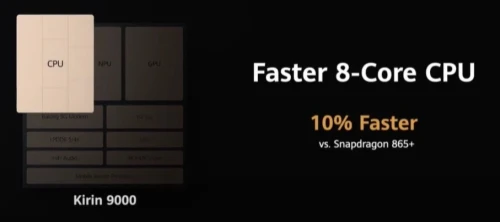We reported earlier this month that Huawei has begun mass-producing its in-house chipset. This was significant because the US Commerce Department had barred the corporation from purchasing cutting-edge chips built by foundries utilizing American technology. Huawei employed Qualcomm’s Snapdragon 8+ Gen 1 processor in last year’s highly praised Mate 50 Pro flagship model, which does not enable a 5G connection.

The Biden administration stated in late January that it was refusing more requests for export permits from US firms exporting to the Chinese company. It means that if its supply of Snapdragon processors runs out, Huawei will be unable to employ even 4G Snapdragon technology. And in China, the country’s largest foundry, SMIC, is confined to creating chips utilizing the 12nm-14nm process node, as opposed to the 3nm devices produced by TSMC and Samsung.
Can Huawei’s in-house chipset truly compete with Qualcomm and MediaTek?
A lower process node number implies that smaller transistors are used, which allows more to fit inside a device. And the more transistors a chip has, the more powerful and energy-efficient it is.
Even if the preceding claim is true and Huawei can mass-produce an in-house chipset using a 12nm-14nm manufacturing node, the phones that will utilize them would be slower than those built by other manufacturers, even those located in China, such as Xiaomi, Oppo, Vivo, and OnePlus. Because of its purported links with the Communist Chinese government, Huawei is viewed as a national security danger in the United States.
Meanwhile, the question is why China’s leading foundry cant make chips at a lower manufacturing node. This is because the single equipment required to produce silicon at nodes of 10nm and below cannot be delivered to China. Extreme ultraviolet (EUV) lithography equipment is used to etch exceedingly tiny circuitry designs on silicon wafers. Only one business, Dutch firm ASML, manufactures the machine, which is prohibited from being sent to China by the Netherlands, the United States, and Japan.
Nonetheless, Huawei continues to forge ahead on its own, as it has done with its HarmonyOS operating system, XMAGE photography system, and Huawei Mobile Services ecosystem. According to Huawei Central, despite the restrictions, Huawei’s semiconductor business, HiSilicon, has continued to work on creating new chipset designs. Before the penalties, Huawei was the second largest customer of top foundry TSMC, after only Apple.
